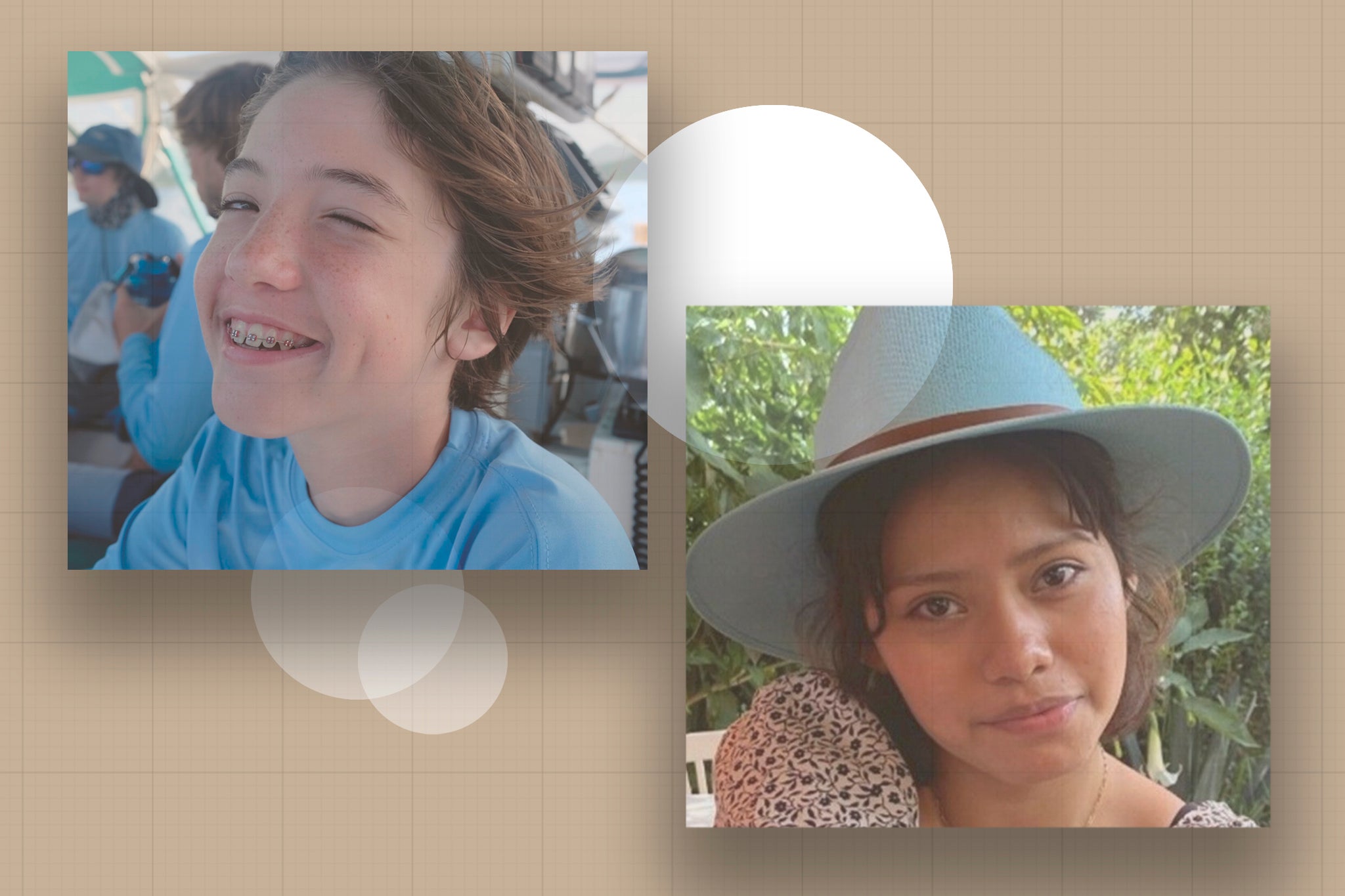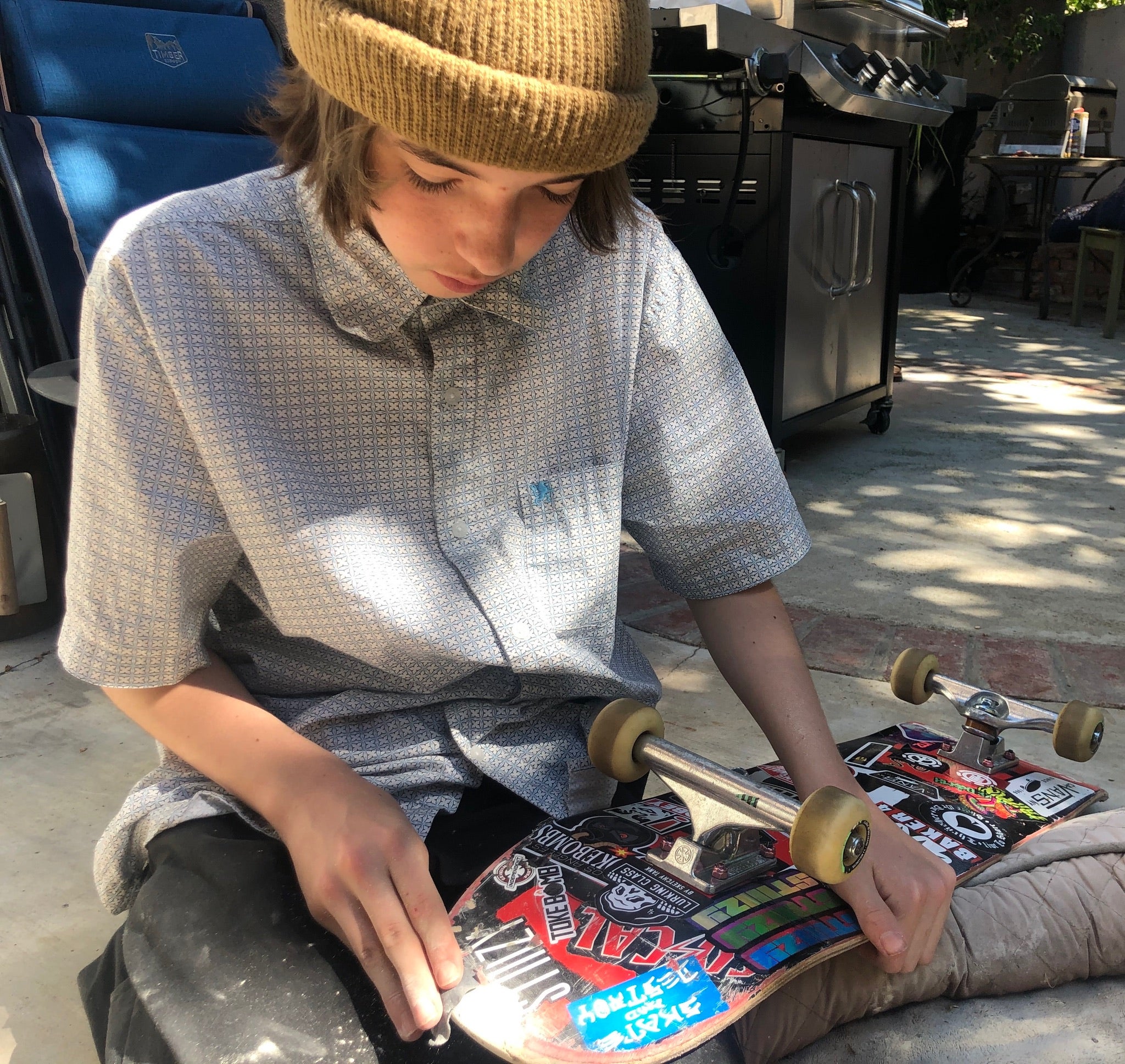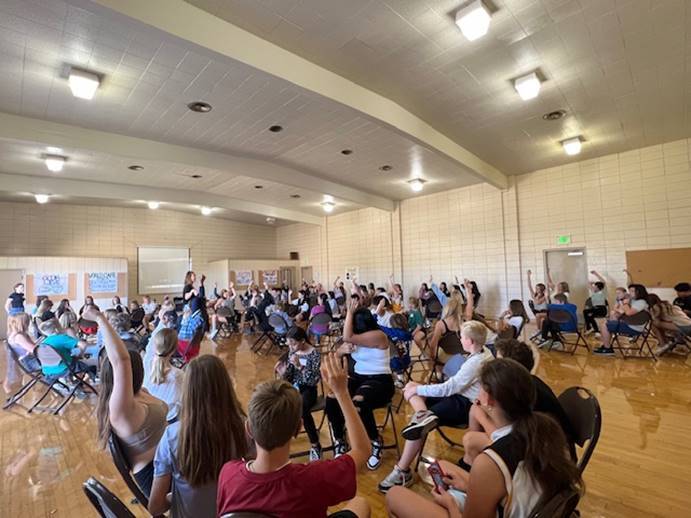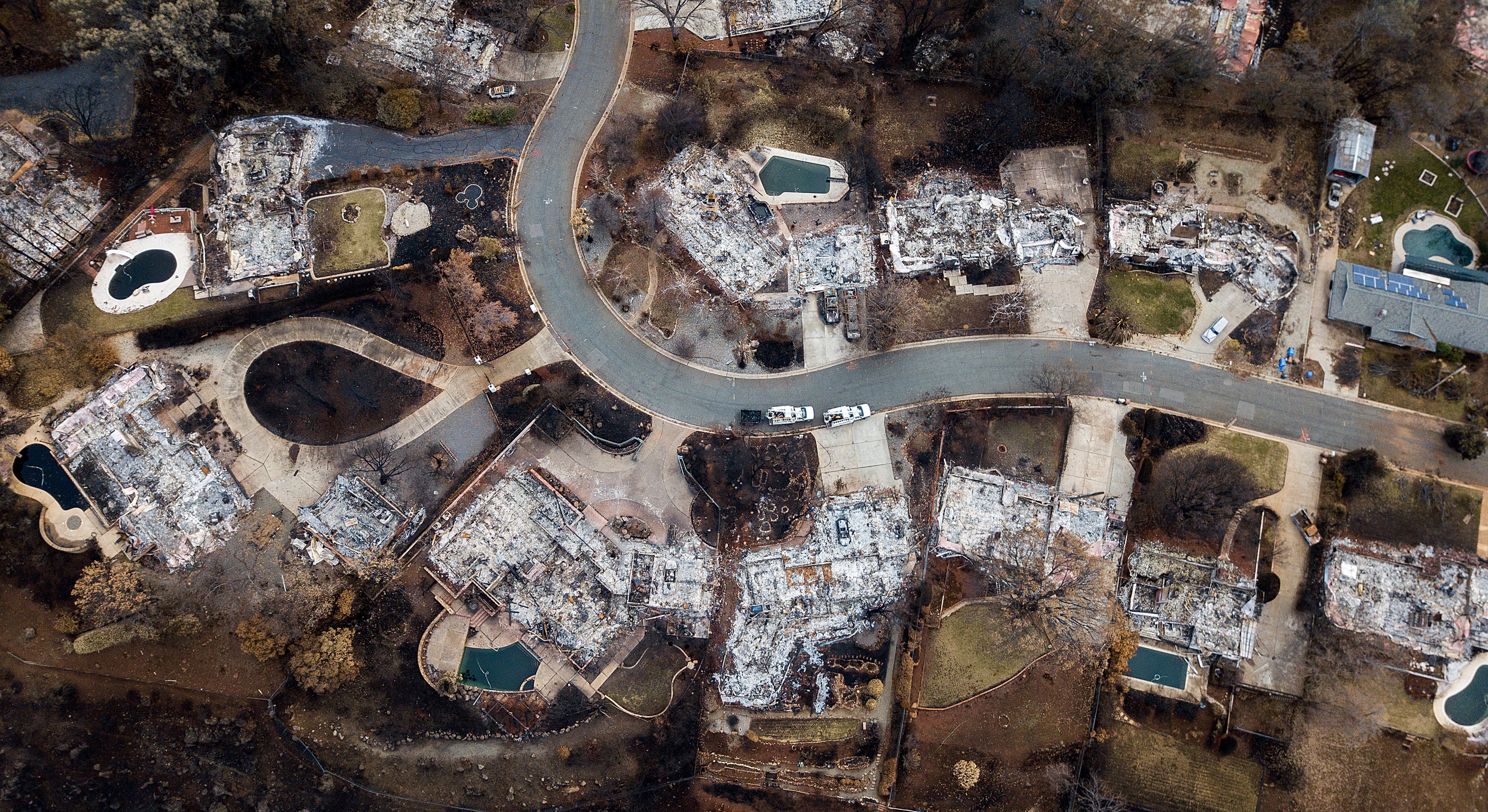California schools are battling a fentanyl crisis. Why are parents so oblivious?
Fentanyl is now responsible for one in five youth deaths in California. Schools – and parents – are finally catching up. Mike Bedigan and Josh Marcus report


Elena Perez, a short and dark-haired woman, looked nervous as she approached the microphone to address a handful of reporters in Downtown Los Angeles in early November. But when she spoke her words were steady and powerful.
“When my daughter passed away, not many knew about fentanyl. But when she died, it was global news, almost everyone found out,” she said in Spanish. “Now, it’s about preventing children’s deaths, and hoping it doesn’t happen again.”
In September 2022, Ms Perez’s daughter, Melanie Ramos, was found dead in a bathroom cubicle of her Hollywood high school. Investigators believe the 15-year-old had taken what she thought was a Percocet painkiller. The pill was cut with fentanyl, killing her.
According to her family’s lawyers, Melanie was the seventh student to overdose after taking drugs, likely laced with fentanyl, at her high school that year. The teenager’s family alleges that she may not have died had the school been more alert to the dangers of the deadly opioid and implemented proper supervision on its campus.
Her death stirred state lawmakers to pass a bill, which takes effect on New Year’s Day, mandating all California public schools formulate plans to prevent and confront overdoses on campuses. In anticipation, some schools have begun training staff, ranging from nurses to teachers, on how to administer life-saving overdose-reversal medication Narcan.
In September 2022, shortly after Melanie Ramos’ death, Narcan was made available at all K-12 schools in the Los Angeles Unified School District (LAUSD). Since then, the medicine has been administered 55 times across the district – almost once per week – a spokesperson for LAUSD told The Independent.

Fentanyl – which is 50 times more potent than heroin and 100 times more potent than morphine – is now behind one in five youth deaths in California.
The state has spent over $1bn in recent years to combat the wider opioid crisis, but local officials, activists, and teens themselves told The Independent that a key solution may come from an unexpected place: to protect kids from fentanyl, many parents may need to completely change how they talk about drugs.
The ‘stigma’ stopping parents from vital conversations
On 1 January 2024, SB10, dubbed “Melanie’s Law” in honour of Ramos, will take effect.
The bill mandates that all public schools across California provide training to employees on opioid prevention and life-saving response under a formal plan known as a Comprehensive School Safety Plan (CSSP). Backers of the law hope everyone from school bus drivers to sports coaches and canteen workers will get the training.
Melanie was a happy teenager, who loved travelling and dreamed of joining the army, her family said. Elena Perez told The Independent she was “proud” to have her daughter’s name attached to such an important bill.
Her message to other parents: “Pay close attention to the information that is being shared in schools. Learn, gain knowledge, and speak to your children.”
But the recent and growing prevalence of fentanyl has shocked even the most knowledgeable parents across the state.

Amy Neville’s son Alexander died in 2020 at age 14 from fentanyl.
His death was all the more tragic, Ms Neville said, because she and Alex’s father Aaron proactively and honestly talked about drugs and health with their two kids as much as they could. The Orange County parents also kept a close eye on their son’s social media use, periodically checking what he was seeing on his various accounts. The family just didn’t know the specific dangers of fentanyl, and how it came to be cut into vast proportions of the drug supply. Alex’s public school wasn’t teaching students about fentanyl either.
“We thought we had this. We had rules about social media,” she said. “When the day came, nobody was talking about fentanyl and nobody was talking about the depths of social media.”
Alex, remembered as an introspective, eclectic child with passions ranging from video games and skateboarding to Egyptology and fencing, had an open relationship with his family, his mom said.
The day before his death, Alex came to his parents in anguish. The teen described how he was feeling depressed and anxious, and that he recently began experimenting with OxyContin, a prescription opioid. He wanted to return to a drug treatment clinic he’d visited in the past.
The teen, his parents said, was sceptical of the illegal pill market and thought the drugs he bought on social media were “real.” He died after taking what he thought was OxyContin, but it was laced with a fatal dose of fentanyl.
After Alexander’s death, Ms Neville started the Alexander Neville Foundation and travels the state educating students and families about preventing youth opioid abuse and overdose.
She also wants the public to know more about the ways social media has made it far easier for students to buy drugs. She’s part of a group of parents suing Snap, the parent company of Snapchat, a social media service parents say facilitated the sale of drugs through signature features like disappearing messages. The company argues it is not responsible for the illegal actions of its users.

In her travels, Ms Neville frequently comes across parents who believe their family, or their community, will somehow be exceptions to the broad-based epidemic sweeping across California.
That’s despite the data showing fentanyl killing young people across the state, from urban centres like Los Angeles and San Francisco, which just had its deadliest year ever for drug overdoses, to rural counties further north. According to state data, opioid overdose deaths in California among those aged 15 to 19 shot up from 94 deaths in 2019 to 236 in 2021, though they’ve since begun to decline slightly. But parents often assume their children won’t end up as one of the statistics.
“There’s this whole ‘my kid would never do that’ mentality,” Ms Neville added. “My kid did do that, so you tell what kind of kid does it. We’ve got some heavy, heavy stigma going on out there.”
While schools will soon be required to take an active approach under Melanie’s Law to potential fentanyl overdoses, Brian Gunsolley, community engagement sergeant at the Orange County Sheriff’s Department (OCSD), says that more needs to be done to get parents involved.
Mr Gunsolley hosts educational talks at dozens of schools in the county, in partnership with the Orange County Department of Health (OCDH).
Over the 2022-2023 school year, the OCSD provided fentanyl awareness assemblies in 27 high school and junior high schools throughout the county, with 15,695 students hearing talks that outline the risks and consequences of taking illegal drugs. There were 26 awareness seminars for parents in the same time period, but only 1,186 parents bothered to attend.
“Parents are the hardest group to get to,” Mr Gunsolley told The Independent.
“They just don’t show up to the meetings, because they’re busy doing a lot of other things, sporting events, whatever – we get it, but they’re the most important people to protect the children.
“These overdoses are occurring in the home, not at school. And so we really push hard to try and get [the message] out to parents.”
Parental attitudes towards drugs even cause them to criticise vital life-saving medicines like naloxone, sold over the counter as Narcan, an emergency nasal spray that can reverse the effects of an opioid overdose.
Some parents see the availability of Narcan as encouraging drug use, according to Robin Christensen, chief of the substance and addiction prevention branch of the California Department of Public Health (CDPH).
“They can be perceived as enabling drug use, and that’s a myth I would like to counter,” she told The Independent. “I always try to remind people, when you carry naloxone, you’re doing it to save others. You cannot save yourself from an overdose by using naloxone on yourself. It is inherently an act of service.”
That message is part of a larger media campaign the agency has rolled out across the state, featuring ads across traditional and social media in multiple languages.
A ‘huge shift’ in how officials talk about drugs
The necessity of reaching parents has caused a sea change in how local officials need to think – and talk – about drugs, according to Scott Kennelly, director of Butte County’s behavioural health office, which provides drug and mental health treatment.
Butte is a mostly rural county with a population of just over 207,000 in the state’s north that has seen a disproportionate share of opioid deaths. Officials saw drug use spike after the traumatic 2018 Camp Fire, which killed at least 85 people and almost completely destroyed towns like Paradise.

Mr Kennelly told The Independent that he’s shifted from emphasising avoiding drugs to acknowledging that some kids inevitably experiment with substances, so it’s better for them to know as much safety information as possible.
“Part of the campaign is not, ‘Don’t do drugs, drugs are bad.’ Drugs are here,” he said. “If you’re going to use them, be responsible and have someone with you in case you overdose and have Narcan with you. That is a huge shift from 15 years ago.”
Some families aren’t ready to receive that message — particularly Californians who see opioid use as something happening only in the Rust Belt, or the big cities, or among the homeless, when really it’s a crisis touching everyone from the college-bound to the down-and-out. But it’s a truly national epidemic: across the US, fentanyl was involved in 84 per cent of the more than 2,231 fatal teen overdoses between 2019 and 2021, the most recent period with full federal data from the CDC.
“Those are the ones, that’s the middle class, the upper class parent. ‘My son would never do drugs,’” Mr Kennely continued. “Their kid, that son or daughter, died in their bed because they took something to help them sleep at night and it happened to be laced. It’s just tragic in that sense there are still some parents who are like, ‘Don’t ask, don’t tell, don’t acknowledge.’”

But it’s an urgent fact that California families need to accept, he added, as “almost all” of the illicit drug supply is now cut with powerful opioids like fentanyl or sedatives like xylazine. A dose of fentanyl comparable to a pinch of salt or a few grains of sand is enough to be fatal.
In Butte County, to get everyone involved, officials have used everything from area-wide public messaging campaigns, to “blanketing” the community in Narcan, to an innovative programme called Athlete Committed, where student athletes and their parents are required to go through educational meetings and learn about drug use prevention in order to be allowed on sporting teams.
“A lot of parents are completely disconnected, on some level, with the fact that their kids are using,” Mr Kennelly said. “If they want their kid to play football, they’re going to have to participate in that activity.”
Students who violate the programme’s code of conduct by using drugs are referred to an education specialist and given intervention sessions. So far, according to Butte County, they haven’t had any referrals for violations this year.
Young people must lead the way
Elsewhere, young people themselves are leading the fight against the drug that’s killing so many of their peers. And public health leaders are recognising that the War on Drugs scare tactics of the past are failing to reach this key demographic.
Growing up in Marin County, Avery Kalafatas, 18, never knew the extent of the fentanyl crisis in the state. She said overall, there was a perception in her area, a wealthy, scenic enclave north of San Francisco, that drug deaths were something that happened somewhere else.
Her beloved cousin Aidan died in 2020, after taking what he thought was a Percocet pill.
“I had no idea about fentanyl before that,” she said. “I literally had never heard about it.”
The tragedy – and the shock that educators around her failed to inform her about fentanyl – prompted Ms Kalafatas to launch Project 1 Life that same year, a teen-run nonprofit that now has student ambassadors in 20 states holding conversations and training with their peers.
She said that if schools are serious about reaching people her age, scare tactics won’t work, and neither will ignoring the problem.
“At the end of the day, coming into a classroom, saying absolutely don’t ever use drugs, using fear-mongering and really just trying to scare kids – if they do it one time, everything bad will happen – It turns kids’ minds off,” she said. “They write off everything that that person is saying as extreme and not really applying to me.”
Instead, she said, better education looks like factual, non-judgemental, honest conversations. That’s the approach she sees teens already embracing, even if their parents haven’t come around.
“I’ve gotten a ton of pushback with Project 1 Life, mostly from adults,” she said. “I haven’t received any from kids.”
In addition to through in-person training, Project 1 Life hopes to reach students on social media. Their messaging on platforms like Instagram includes a mix of tributes to young people lost to opioids, public health myth-busting, and the kind of tastefully designed infographics popular for sharing political issues online.
In listening sessions with young people, CDPH’s Ms Christensen has seen a similar desire for unvarnished dialogue.
“They are very well educated around some of the dangers of fentanyl,” she said, adding, “I’m hearing from many of the teens in the focus groups that they themselves are interested in fact-based information so they can make an informed decision.”
In Butte County, officials try as much as possible to have youth “peer specialists” as close in age as possible to their audience attend training sessions and community events.
“Really everything being youth-driven is the biggest piece I can see having an influence,” Emily Swearingen, program manager of the county’s Prevention Unit, told The Independent.
‘Scientific’ training on drugs, even for elementary schoolers
Law enforcement in Orange County is making sure awareness of fentanyl begins at an even earlier age. As part of his county-wide education crusade, Mr Gunsolley runs the Above The Influence program – which is taught to fifth and sixth graders.
Yes, parents may not want to think about it, but 10-year-olds are the ideal audience for chats about drug prevention.
“We target fifth and sixth graders because when a student transitions from elementary school to middle school, there’s a high risk that they’ll start using something… and so we want to get to them before they get to middle school,” Mr Gunsolley told The Independent. “[That’s when] their minds kind of close off to listening to that message.”
Like Ms Kalafatas, he agreed that a more “scientific and logical” approach is needed.
“Research has found that… scare tactics do not work, but logical discussions about the dangers of drugs, answering their questions, interacting with the kids, talking about alternative choices – that’s the best way to help your kids understand the dangers of drug and alcohol use.”
The OCSD provided the six-week drug prevention Above The Influence program in 37 schools over the 2022-2023 school year, graduating approximately 3044 students.
Such vital education has to be done thoughtfully, otherwise it might not be taken seriously by youngsters, advocates warn.
Some schools try to add a fun, youthful twist to anti-drug education to make it “relatable” to kids. At Alexander Neville’s elementary school, for instance, kids got bracelets and pencils to “colour out” drugs, which students scribbled over to create mocking slogans.
Young people really want to be taken seriously and have direct conversations about the facts — not just interact with cringe-worthy campaigns that adults think kids will connect with, according to Ms Neville of the Alexander Neville Foundation.
“We gamify it. Wear cowboy clothes to give drugs the boot. Wear sunglasses to shade out drugs. What does that even mean?” she said, describing various initiatives she’s seen. “They’re making fun of the messaging. There’s not this serious tone to it.”
“These kids are talking to each other…The personal stories are really what make the impact,” she added. “Going in there and caring about them.”
Replacing the War on Drugs with an ‘all hands on deck’ approach
State Senator Dave Cortese, author of “Melanie’s Law”, is well aware that students may hesitate to seek help from school officials or police, but he said such cooperation is vital.
He hopes that SB10 will encourage schools to take a “restorative justice” approach, seeking alternatives to prosecution when they learn about opioid misuse putting kids at risk.
“As a former school board member myself, I really, really dislike zero-tolerance policies. I don’t think it does any good,” Mr Cortese told The Independent.
“We need to keep all these kids in the fold and especially handle with care those young people who feel compelled to come forward because of something they saw or heard.”
Though the law does not provide any specific protections for those who come forward to help authorities, Senator Cortese hopes schools don’t repeat what he sees as the mistakes of past drug policies, which treated drug use as a criminal problem, not a public and mental health one.
“I don’t want to confuse it with the War On Drugs because I think that was a failed experiment, and I think it ended up abusing, frankly, a lot of people and young people of colour because it was a very targeted approach,” he said at the November press conference celebrating the passage of Melanie’s Law. “But this is an ‘all hands on deck’ approach. It is absolutely that.”
Melanie’s mother, Elena Perez, stood beside the senator, filled with both grief and optimism to be at this point.
"It is going to help so many young people,” she said, “and so many parents to not be in this pain.”
Join our commenting forum
Join thought-provoking conversations, follow other Independent readers and see their replies
Comments
Bookmark popover
Removed from bookmarks